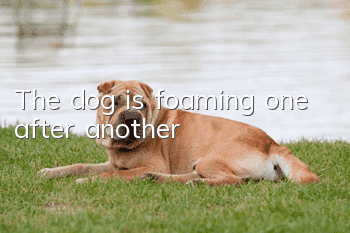How to Choose a Purebred, Healthy Saint Bernard Puppy

The Saint Bernard can be said to be the representative of large dogs. It is a watchdog native to Switzerland. It was bred in the Saint Bernard Monastery in Switzerland after 1700 and formed its own type. The Saint Bernard is a descendant of the Alpine Mastiff first brought by the Roman army when they passed through Switzerland. The Saint Bernard was once a short-haired and aggressive breed.
It was virtually extinct at a certain period, but may have been revived through the use of the bloodline of Newfoundland and Great Dane dogs. English: St.Bernard is now raised in various countries. There are two types: long-haired Saint Bernard and short-haired Saint Bernard. Regardless of long-haired or short-haired dogs, the main ones are St. Bernard dogs with red spots on a white background and St. Bernard dogs with white spots on a red background. If they can be trained well from a young age, it is not a difficult dog breed to raise, but it does require a large open space and sports ground.
[Appearance of the Saint Bernard] A large and heavy mountain dog, well balanced and in good condition. A little taller is better. Action is extremely important, dewclaws should be removed, splayed toes, hollow back and straight hocks should be noted, and there are two types of shapes, British and American.
[Saint Bernard dog weight] The male Saint Bernard dog weighs 65~90kg and is 70cm tall. The female Saint Bernard dog weighs 55~77kg and is over 65cm tall. [Saint Bernard dog eyes] Dark brown, drooping eye edges, sometimes showing nictitating membrane. Dark brown, friendly eyes located at the front of the head.
[Saint Bernard Ears] Large in the middle, continuing the cheek drop. Triangular, soft flat ears.
[Saint Bernard dog bite] Normal bite, incisal bite.
[Saint Bernard Tail] The base is high and the length hangs down the tail. Strong tail, slightly curled at the end.
[Coat color of Saint Bernard dog] Red on white, white on red, various shades of red with tiger hair spots, white spots on the face, slender white spots from the eyes to the face, chest and tail of the thumbs and toes, etc. Very dense outer and inner skin.
[Disqualified Saint Bernard] Vaginal testicles Disadvantages: 1. Low standard 2. Single color 3. Extreme malocclusion 4. Lack of white
[Head] Its skull is round and wide, with a very clear forehead and a short but thick muzzle. The St. Bernard has flat cheeks and a long hanging upper lip. [Ears] The St. Bernard has ears that droop downward and is of medium height.
[Eye] The St. Bernard's eyes are bronze and medium in size.
[Nose] The black nose of the Saint Bernard is large and has a well-developed muzzle.
[Body] The Saint Bernard has a very thick chest, very wide, and a strong back, which is inclined to the waist. [Coat] The coat of the Saint Bernard can be divided into long hair and short hair. Both types of coat are very rich and dense. The coat lies flat and its color isThe colors can be as follows: white on the chest, limbs and tail end; the markings are reddish-brown, orange, red-spotted with head, or white with patches of different colors.
[limbs] The forelimbs of the Saint Bernard are very long and straight. It has very powerful hind limb bones and is very thick.
[Feet] The feet of Saint Bernard dogs are very large, with obvious bulges on the toes, and the dewclaws must be removed.
[Height] The stature of the Saint Bernard dog is very large.
- What are the common dog skin diseases in summer? Be careful to prevent them!
- Can the newly purchased dog be vaccinated?
- How to train an Alaskan dog to stop eating poop, a must-read for beginners!
- Are French bulldogs more likely to have dystocia when giving birth to puppies? Bulldogs give birth!
- How to treat arthritis in dogs
- How to trim your dog’s legs and feet
- How to train a dog to pick up things? It doesn’t just require beating and scolding!
- How to train a Schnauzer not to bark? Train Schnauzer’s obedience!
- How to teach a dog to pick up the food bowl? Easily teach a good dog!
- Never feed these foods, as they can easily affect your dog’s health!



